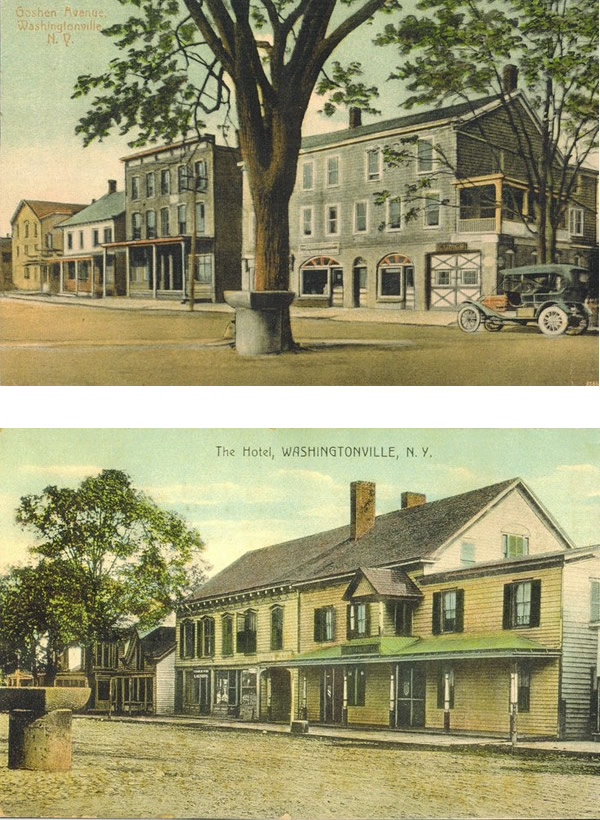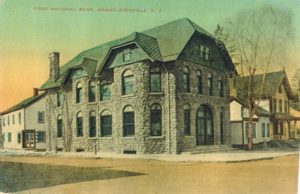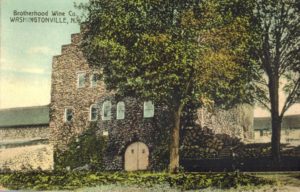About Washingtonville
 Washingtonville was first settled in 1731. In 1809 John Jacques, a boot and shoemaker, set up his shop in this tiny settlement of nine houses, then known as Little York. Jacques would later establish America’s Oldest winery in 1839, now known as Brotherhood Winery.
Washingtonville was first settled in 1731. In 1809 John Jacques, a boot and shoemaker, set up his shop in this tiny settlement of nine houses, then known as Little York. Jacques would later establish America’s Oldest winery in 1839, now known as Brotherhood Winery.
In its earlier years, Washingtonville was called Matthews Field, even before it became known as Little York. A part of the Rip Van Dam patent, it was sold to Vincent Matthews in 1721. Matthews reportedly was the second settler of the region, although the first white settler. Its earliest inhabitant was an Indian by the name of Moringamus, whose wigwam or tepee was once pitched back near where the Coleman bottled-gas plant is now located.
Samuel Moffat built a trading post on the village square in 1811 at the junction of the New Windsor and Blooming Grove Turnpike with Goshen Road. The hamlet began to prosper with a tannery, grist and plaster mills. A hotel was needed, and Samuel Moffat built his Washington Tavern in 1818. That same year Samuel and John Jacques bestowed the village with a new name, Washingtonville, in honor of the late General and First President of the United States who, we are told, came through and watered his horse at the trough which had been located under the big tree in the center of the village.
 Washingtonville grew after the New York, Lake Erie and Western Railway built its branch through the village in 1850. Even though the railway tracks have been removed, the remains of the railroad building are located behind the former Agway Store, now Fulton Square.
Washingtonville grew after the New York, Lake Erie and Western Railway built its branch through the village in 1850. Even though the railway tracks have been removed, the remains of the railroad building are located behind the former Agway Store, now Fulton Square.
Incorporated in 1895, the Village had become an important dairying center with two creameries, Borden’s (presently known as bus garage) and the Farmers’ Cooperative. Markets, groceries, a bank, feed and lumber dealers, wagon shops, furniture makers and a hub shop prospered.
C.R. Shons opened up a cooperative on Depot Street. He also had a large orchard on Goshen Avenue. Thomas Fulton’s grist mill, now the site of Fulton Square and Beverage Distributors, was destroyed by fire in the early 1900s. Hugh Lunney had his slaughter house on Goshen Avenue near where the Spear Printing Company plant is today; he also had a large ice house beside Coopers Creek, harvesting ice from the pond in the winter for commercial use. Borden’s Creamery maintained a bottling plant; its refrigerated cars, loaded with milk, were shipped to Greycourt (Harriman) via the Erie freight or passenger runs. This firm cut its ice from the small pond south of its creamery, storing it in the ice house on the east side of the plant.
Today, Washingtonville is a charming community with many young growing families. It is located within a short distance of Stewart Airport, as well as rail and bus lines for transportation to the New York City vicinity.
 Brotherhood, America’s oldest continually operated Winery, was, as previously mentioned, established in 1839 in the village of Washingtonville, Orange County, New York. The property on what is now known as North Street was originally part of a land grant issued by Letters of Patent by Queen Anne of England to six loyal subjects on March 23, 1709.
Brotherhood, America’s oldest continually operated Winery, was, as previously mentioned, established in 1839 in the village of Washingtonville, Orange County, New York. The property on what is now known as North Street was originally part of a land grant issued by Letters of Patent by Queen Anne of England to six loyal subjects on March 23, 1709.
Proud of his Washingtonville Heritage, David Moffat, Jr. built the Moffat Library in 1887 in memory of his mother. The Sam Moffat house, sold for one dollar, was moved across the street, just east of the BP Gas station to make way for the edifice.
The cornerstone of the Moffat Library was laid on September 18, 1886; the contractors were Taylor and Emslee of Cornwall. It was built of Goshen brick with many elaborate stained glass windows adorning the building; the large tower on its roof holds a Howard clock. Its auditorium (which soon became the Village meeting room, then the Blooming Grove Town Hall, and is presently used for community programs) was 48’ by 56’ and seated 375 persons. The best opera-type chairs obtainable were purchased, as was the latest in stage equipment. Speaking tubes ran from stage to dressing rooms. The reported cost of the building at that time was $25,000 (1886). In 1994, it was designated as a National and State Historic Landmark.
If you wish to learn more about the history of Washingtonville, there is a copy of the book “Around the Watering Trough” by E.J Mclaughlin, available for viewing at Village Hall, 9 Fairlawn Drive.
